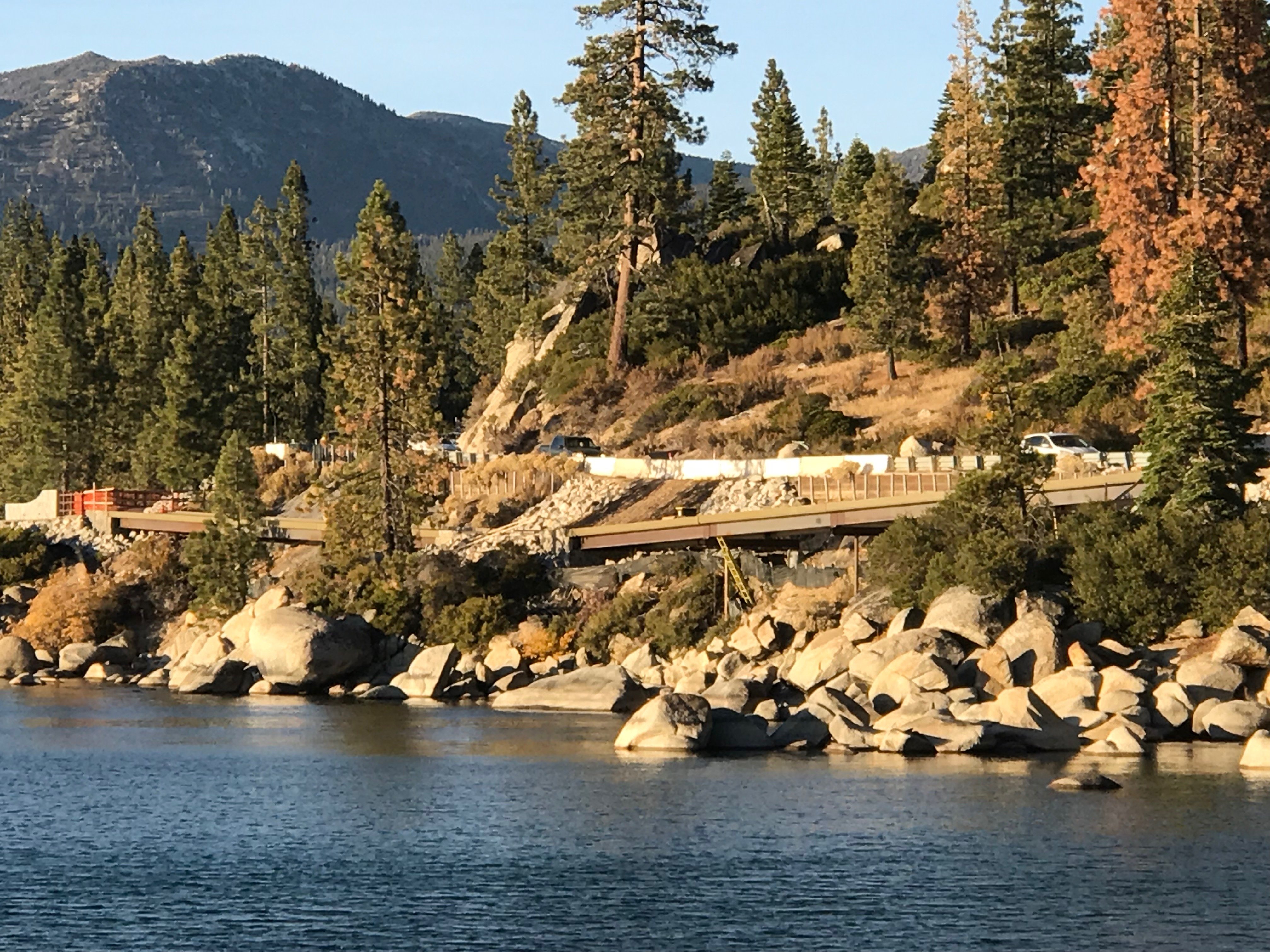
Fiber-reinforced polymer (FRP) composites have been adopted as a mainstream construction material, particularly in structural strengthening applications, pedestrian bridges and rebar. For most FRP bridge applications, the steel support beams or trusses provide the primary load carrying structure. But the composite material took on a bigger role in the case of the Nevada Department of Transportation’s (NDOT) State Route 28 Shared-Use Path and Safety/Storm water Enhancements project.
Nevada SR 28 [south of Lakeshore Drive, in Incline Village] parallels 11 miles of undeveloped and pristine shoreline on the East side of Lake Tahoe. The nationally designated scenic byway is a two-lane, mountainside road overburdened by more than one million recreationists and 2.6 million-plus vehicles per year. Nearly 2,000 pedestrians and bicyclists share SR 28’s narrow travel lanes and unpaved shoulders. Limited parking and the lack of safe access to sites of interest contribute to roadside safety hazards and erosion which impacts water quality and lake clarity.
The traffic volume for motor vehicles, pedestrians and bicycles is expected to double in the next 20 years placing further strain on current facilities and the area’s fragile ecosystem.
The NDOT collaborated with 13 federal, state and local agencies [Carson City, Douglas County Federal Highway Administration, Incline Village General Improvement District, Nevada Department of Public Safety-Highway Patrol; Nevada Division of State Lands; Nevada Division of State Parks, Tahoe Fund, Tahoe Regional Planning Agency, Tahoe Transportation District, U.S. Forest Service-Lake Tahoe Basin Management Unit, Washoe County and Washoe Tribe of Nevada and California] to develop the Nevada Stateline-to-Stateline Bikeway North Demonstration Project (SR 28 Shared-Use Path) Joint Environmental Assessment for the first three miles of shared-use path from Incline Village to Sand Harbor. This component is part of the larger Nevada Stateline to Stateline Feasibility Study Report which covers 30-plus miles of shared-use path on the Nevada side of Lake Tahoe.
The big question posed by project collaborators was how to design and build a shared use path that could be installed quickly on a rocky, uneven slope.
The NDOT contracted with engineering design firm CH2M’s office in Boise, Idaho, to come up with a solution. They looked at several.
Concrete provides a solid surface but creates enormous constructability challenges for this type of application. State Route 28 provides the only access to that section of coastline. To pour concrete the road would have to be shut down, creating a problem for both visitors and the locals. DOTs typically don’t favor wood for these types of applications because it doesn’t last long and it doesn’t create a good surface for skateboarders, bicyclists and roller skaters.
Environmental conditions and traffic concerns dictated a lightweight, prefabricated product; prompting CH2M to choose Composite Advantages FRP bridge deck product. Phase 1 of the project is well underway with CA providing 12 FRP bridge spans. Check back as we’ll be talking in our next couple blogs about how we met the project’s design and installation challenges.



